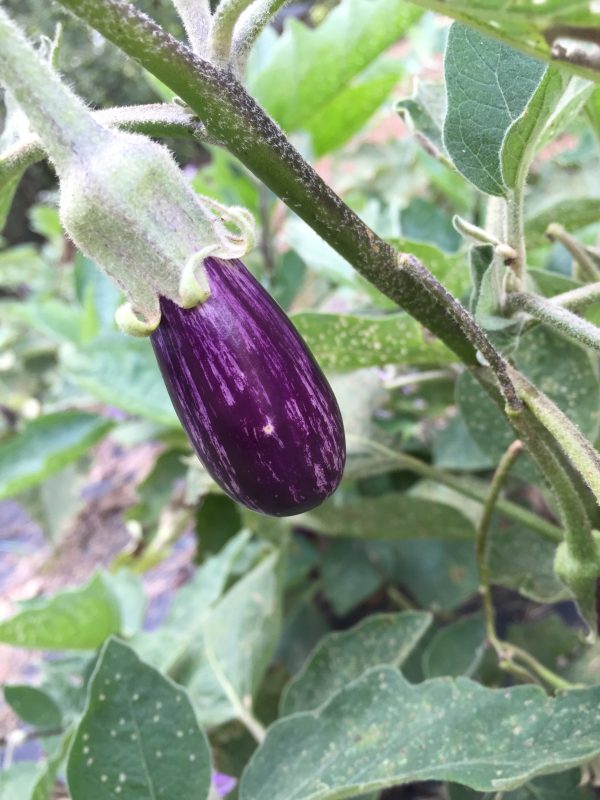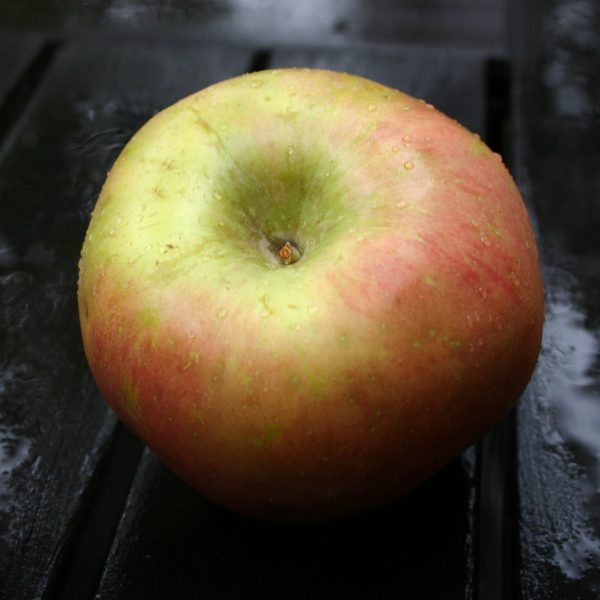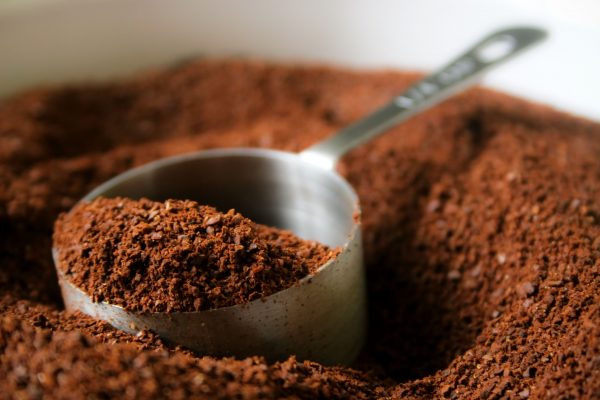Eggplant

Solanum melongena var. esculentum
Most people recognize eggplants with their dark purple fruits and wonder how they got the name. Actually, there are varieties with small white fruits that look very much like eggs hanging on the plants.
• More detailed information can be found in The Georgia Fruit & Vegetable Book by Walter Reeves and Felder Rushing
• See also:
These are often available as potted plants for decorations rather than for food. Eggplant is a member of the same family as tomatoes, potatoes, and peppers. Culture of eggplant is very similar to that of bell peppers. Neither plant requires support, although eggplants are bigger than peppers. These warm-weather crops thrive where the summer is long and hot. Eggplant is probably a native of India and has been cultivated for more than 1,500 years. It is of great importance as a crop in the Far East and is more common than tomatoes in India, China, and the Philippines.
WHEN TO PLANT
There is no need to plant eggplants into the garden very early. They need warm weather to develop and may rot off when the weather is cool and wet. Eggplants are much more sensitive to cold than tomatoes are. They will not grow until the soil is warm. Sow seeds indoors under lights about 2 weeks before the frost-free date (average date of last frost). The plants are slow to start, taking at least 6 to 8 weeks to reach a transplanting size. Set out started plants after the latest date of last frost, or sow seed directly in the garden after any danger of frost has passed.
WHERE TO PLANT
The sun provides the warmth needed by these plants to thrive. Plant them in a full-sun (8 to 10 hours will suffice) location with good drainage. Well-drained soils warm up more quickly than other soils.
HOW TO PLANT
Prepare the soil by spading or tilling. (See “Soil Preparation” in the introduction to the vegetable garden.) Incorporate organic matter and fertilizer at half the normal rate (1/2 pound of 10-10-10 or a similar proportion) per 100 square feet of garden. To seed directly in the garden in rows, sow seeds in hills 12 inches apart, with 24 to 30 inches between rows or even closer for smaller-fruited varieties. After seedlings are up, thin them to 1 per hill. (You can recognize eggplant seedlings because they will be in rows and all look the same; weed seedlings will be randomly spaced, and all will look different.) In a bed, space the hills 12 to 18 inches apart in each direction, which will allow 2 or 3 plants across the bed.
Transplants started indoors or bought from greenhouses or garden centers should have 3 to 4 sets of leaves with a healthy green color. Check plants carefully for signs of insects because aphids and whiteflies often gain entrance to the garden on infested transplants. Remove the plants from the containers, and set the plants at the same depth they were growing in the containers. Firm the soil gently around the plants, and water in with 1 cup of transplant starter fertilizer, mixed according to directions on the package, per plant. In rows, space the plants 12 inches apart, with 24 to 30 inches between rows. In a bed, space the hills 12 to 18 inches apart in each direction. Homegrown transplants tend to become weak and leggy, but even leggy ones will make decent plants in the garden with proper handling. Do not plant them deeper to compensate, or the roots will suffocate. Plant them on their sides, and cover the long stems lightly with soil. The tips of the stems will quickly turn upward, and the buried stems will sprout new roots.
CARE AND MAINTENANCE
After they are established, eggplants can stand dry weather. For best production, however, water them as needed to provide 1 inch per week. When the plants are half grown (about 12 inches high, but size depends on the variety; check the seed packet for size), side-dress them with a high-nitrogen fertilizer. Pests and diseases may pose problems with eggplants. Flea beetles will make small holes in the leaves, and a severe infestation can reduce yield; control the pests with an approved garden insecticide. Verticillium wilt is a serious disease that causes the plants to dry up about the time they start to produce fruit; plant resistant varieties, and rotate the planting from one part of the garden to another each year.
ADDITIONAL INFORMATION
Harvest the fruit when it reaches full size and is still glossy. Overly mature fruit will be spongy, seedy, and bitter. Cut the stem with shears or a sharp knife instead of trying to tear the fruit off. Watch out! The stems may be thorny.
VARIETIES
Varieties
Days to Maturity
Comments
Long-Fruited:
Ichiban
70 days
Long, slim fruit.
Little Fingers
68 days
Fruit in clusters.
Slim Jim
70 days
Lavender.
Novelty:
Easter Egg
52 days
White, egg-sized, egg-shaped, ornamental and edible.
Oval-Fruited:
Black Beauty
80 days
Deep purple heirloom, but still popular.
Black Magic
72 days
Classic shape.
Burpee Hybrid
80 days
Improved production.
Cloud Nine
75 days
Pure white, bitter-free.
Dusky
60 days
Early.
Ghostbuster
80 days
White and sweeter than purple Varieties.















